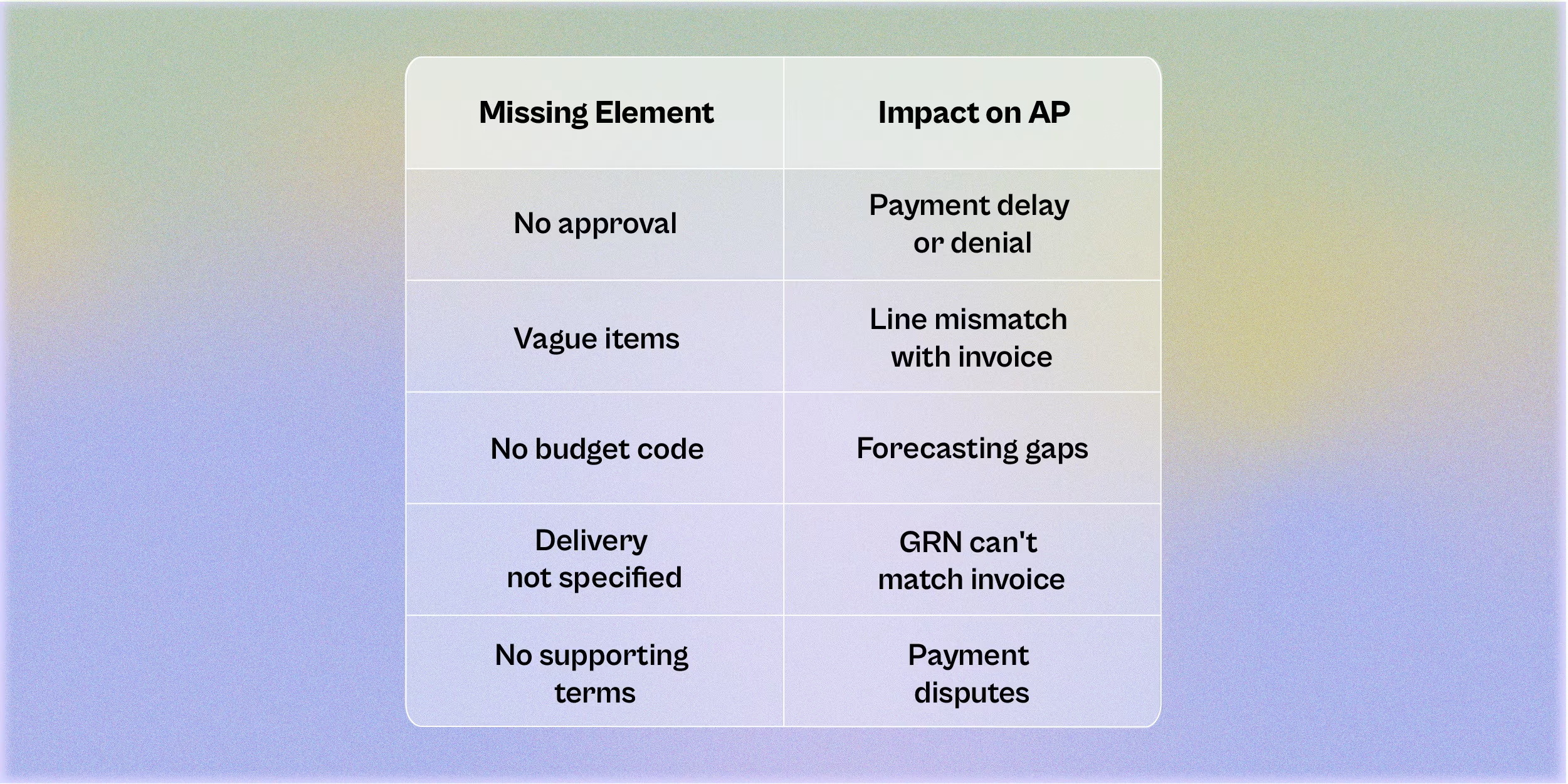The Real Cost of Incomplete POs
According to Ardent Partners, 45% of invoices still require manual handling. The leading culprit? Incomplete or unclear POs.
Common issues include:
- Missing GL or cost center codes
- No approval from a budget owner
- Delivery mismatches with no GRN match
- No contract or terms attached
When these details are missing, AP teams can’t approve invoices confidently or quickly.
What Goes into a Complete Purchase Order?
Detailed Line Items
Include product/service descriptions, quantities, unit prices, and SKU references. Avoid vague phrases like “services” or “office supplies.”
Budget and Cost Center Codes
Every PO must be mapped to a department or GL code. Without this, spend tracking and forecasting fall apart.
Finance teams report up to 35% of overspend due to miscoded or untracked POs (Levvel Research, 2023).
Authorized Approval
If a PO isn’t approved, it’s just a draft. Ensure digital approvals from managers or budget owners before it hits AP.
Automation reduces approval delays by 50–70% compared to manual email routing.
Delivery Details
Clearly define delivery dates and locations (warehouse, office, job site). This supports Goods Receipt Note (GRN) validation during 3-way matching.
Attached Terms or Contracts
If tied to a larger vendor agreement, include that documentation. It prevents payment conflicts over pricing tiers or deliverables.
Where It Breaks: Common Gaps in POs

Companies with these issues see invoice error rates 2–3x higher (Ardent Partners, 2024).
Why PO Completeness Drives 3-Way Match Success
3-way matching = PO ↔ Invoice ↔ Receipt. It only works when the PO is clean.
With complete POs:
- Goods receipt (GRN) is easier to confirm
- Invoice matching is faster and more accurate
Exceptions drop by 60–70%
How Automation Enforces PO Completeness
Modern platforms like Finofo prevent incomplete POs from moving forward. Here’s how:
- Mandatory fields: No missing codes or vague descriptions
- Smart approval routing: Based on department, value, or urgency
- PO–Invoice–GRN matching: Automated checks highlight mismatches instantly
Result: Invoice cycle times drop from 14-18 days to just 3–5 days.
A complete purchase order is more than paperwork, it’s your first layer of control.
For finance and AP leaders, enforcing PO standards means:
- Fewer payment delays
- Stronger spend visibility
- Faster, smarter invoice processing
Ready to Put PO Control on Autopilot?
Book a Demo to see how Finofo enforces PO compliance and automates matching across your AP cycle.







